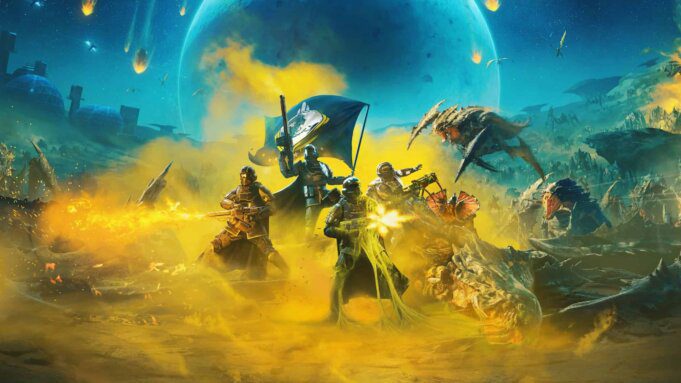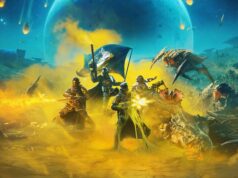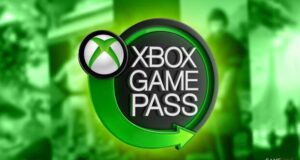The Candid Admission: “Performance Will Take Many More Months”
Shams Jorjani, CEO of Arrowhead Game Studios, addressed frustrated players on the official Helldivers Discord, stating bluntly that “performance will take many more months of work to get even more meaningful improvement.” While Update 4.1.0 delivered over 200 bug fixes and optimizations, Jorjani emphasized this represents “just one step” in a long recovery process.
The Scale of the Problem
Jorjani didn’t mince words about the situation: “The technical debt is crippling.” He explained that Arrowhead is “not getting a passing grade on performance and stability” and acknowledged the studio “didn’t hit the mark” with the Into the Unjust update that exacerbated existing issues.
Key problems plaguing Helldivers 2:
- Hardlocks and crashes: PC players experiencing frequent crashes to desktop, sometimes within minutes
- Severe FPS drops: Performance plummeting from 140+ FPS to unplayable 25 FPS during missions
- Bloated file size: Game now exceeds 140GB on PC, approaching Call of Duty territory
- Console performance: PS5 users reporting “significant FPS drops when diving on a planet”
- Audio issues: Crackling and distortion during gameplay
The Into the Unjust update in October 2025 became a tipping point. What should have expanded the game instead intensified community frustration to levels where even Arrowhead’s typically patient player base revolted across Reddit, Discord, and Steam forums.
The Root Cause: Development Pivots Created a “Bungalow Foundation for a Tower”
Jorjani provided rare transparency about how Helldivers 2 accumulated this “crippling technical debt.” The game underwent multiple dramatic scope changes during development:
Helldivers 2’s Development Journey
- Started as AA game: Initial scope was modest, mid-tier production
- Pivoted to PS5 launch title: Elevated expectations and technical requirements
- Pivoted to free-to-play: Changed monetization and server architecture
- Back to premium: Reverted to traditional paid model
Jorjani’s assessment: “The goal posts were moved a few times—so the foundations of this big tower were made for a little bungalow on the beach.”
He used another analogy: “Tech debt is like a garage filled with stuff you just chucked in. We really need to put up shelves in the back to get organized. That requires us taking everything out so we can get to that wall. Problem is everyone is going in and out of the garage daily with a bunch of stuff.”
Translation: The architecture designed for a smaller game now strains under demands it was never built to handle. Fixing foundational problems requires dismantling systems while simultaneously maintaining ongoing operations—like rebuilding an airplane mid-flight.
| Development Phase | Technical Requirements | Result |
|---|---|---|
| AA Game Foundation | Modest player counts, single platform | Architecture designed for smaller scale |
| PS5 Launch Title | Next-gen performance expectations | Stressed original architecture |
| F2P Pivot | Live service infrastructure, massive scale | Systems redesigned for different model |
| Back to Premium | Revert infrastructure changes | Layers of incompatible systems |
| Multi-Platform (PC, PS5, Xbox) | Three platform optimizations | Further strain on foundation |
Content Delay: No October Warbond
Jorjani confirmed October won’t see new Warbond content. Arrowhead is “choosing to focus on polishing the game’s performance first,” with “more patches coming” before returning to the “new normal” of content delivery.
Why Delaying Content Is the Right Call
While community members initially resisted content delays, the consensus has shifted dramatically. Players now overwhelmingly support Arrowhead’s decision to pause expansion in favor of stability.
The logic: Launching new weapons, armor, and missions means nothing if the game is unplayable. Better to ensure existing content runs smoothly before adding more complexity to an already strained system.
Jorjani explained: “The way we want to operate is that every update is also a health update. But we didn’t hit the mark with this one.” He acknowledged that not every developer can contribute to performance fixes—community managers can’t personally trace bugs, and content designers don’t optimize rendering pipelines.
“If we could put every single soul on just performance/stability and significantly improve those we would,” Jorjani said, “but not everyone can make an impact on performance and the issues that need to be fixed are complex and take time to work at.”
PC-Specific Challenges: File Size and HDD Support
PC players face unique problems. Jorjani acknowledged that hardlocks—complete system freezes requiring hard reboots—represent a “deeper issue still being worked on.” The game’s file size has become another crisis point.
The 140GB+ Problem
Current state: Helldivers 2 now occupies over 140GB on PC—more than many AAA open-world games with vastly larger content libraries.
Update 4.1.0 progress: Reduced file size by 9GB, but this is “just a start.”
The real challenge: Jorjani stated “a big change won’t happen until [we] figure out how to handle mechanical hard drives.” The game’s architecture struggles with HDD read speeds, and the studio is exploring the controversial option of dropping HDD support entirely.
Community theory: The bloat stems from duplicated assets throughout the file structure—a common symptom of technical debt where multiple patches layer redundant files without cleaning up previous versions.
What Update 4.1.0 Delivered (And Didn’t)
Released in late October 2025, Update 4.1.0 represented Arrowhead’s first major attempt to address the performance crisis. The patch notes spanned nearly 20 optimization bullet points.
| What It Fixed | What Still Needs Work |
|---|---|
|
|
Jorjani characterized the patch as “a step in the right direction” but not a solution. “Let us know what works and doesn’t and we’ve got another patch lined up in the future,” he wrote on Discord.
Player response was mixed. While some appreciated the transparency and saw marginal improvements, SteamDB charts show player numbers haven’t rebounded significantly—evidence that one patch couldn’t undo months of accumulated problems.
The Anti-Cheat Controversy: GameGuard Under Fire
Many players blamed GameGuard, Helldivers 2’s kernel-level anti-cheat system, for performance issues. Jorjani initially pushed back: “I’ve answered this a bajillion times. We see no evidence of [GameGuard] having performance impact.”
The GameGuard Debate
Jorjani called GameGuard a “boogeyman” with “negligible impact,” but community pressure intensified after players discovered GameGuard blocked accessibility features. The CEO’s position evolved:
Current status: Arrowhead is now actively investigating GameGuard removal. Jorjani stated the studio will “tackle this other hydra head” after the next patch, suggesting GameGuard might indeed be contributing to problems or that Arrowhead is willing to remove it to appease the community regardless.
Challenge: Removing kernel-level anti-cheat isn’t simple—it requires architectural changes and alternative anti-cheat solutions. But the positive community reception to even considering removal suggests players are willing to accept more cheaters if it means better performance.
Timeline: When Will Performance Actually Improve?
Based on Jorjani’s communications and Arrowhead’s track record, here’s the realistic timeline:
Short Term (Next 4-8 Weeks)
- More hotfix patches: Jorjani confirmed “more patches coming” targeting immediate issues
- Incremental improvements: Expect 5-10% FPS gains, crash reduction, minor optimizations
- No new content: Warbond releases paused through at least early 2026
- Development blog post: Arrowhead promises transparency about prioritization and progress
Medium Term (3-6 Months)
- “Meaningful improvement”: Jorjani’s own timeline for noticeable performance gains
- Architecture refactoring: Addressing foundational technical debt
- File size reduction: Targeting sub-100GB if HDD support decisions are made
- GameGuard decision: Keep, replace, or remove anti-cheat system
- Content resume: Return to regular Warbond releases once stability achieved
Long Term (6-12 Months)
- Full stability: Game performs as well as launch period (February-April 2025)
- Engine improvements: Thankfully not being used for Arrowhead’s next game
- New content with confidence: Expansions that don’t compromise performance
- Leaked content deployment: Illuminate faction enhancements, Death Star-esque Superweapon
Community Response: Patience Wearing Thin
The Helldivers 2 community, typically known for good humor and cooperative spirit, has reached a breaking point. Comments across platforms reflect mounting frustration:
- “Arrowhead, this is unacceptable at this point. Fix your game.”
- “You can’t keep saying performance is getting addressed and yet again an update makes the performance tank.”
- “Not playing [and] neither are my buddies until this is resolved.”
- “How do AH test the game themselves without it crashing all the time? Do they have quantum computers?”
Jorjani’s response to that last question was telling: “Not enough!” He explained that bugs Arrowhead’s testing flagged as “rare” became widespread when “a couple million more play the game.”
The CEO’s transparency—admitting inadequate testing, acknowledging “crippling” technical debt, stating flatly “we didn’t hit the mark”—represents rare candor in the gaming industry. Whether this honesty translates to actual fixes remains the community’s primary concern.
The Right Strategy: Polish Before Expansion
Delaying new content for performance fixes is the correct decision, but it’s also a risky one. Live service games live or die by maintaining player engagement through regular content updates. Helldivers 2 is gambling that players will return once performance improves rather than permanently moving to other games.
Arrowhead is learning lessons many live service developers learned the hard way: technical debt compounds exponentially. Quick fixes create long-term problems. Launching content on top of unstable foundations eventually causes the entire structure to collapse.
Helldivers 2’s performance crisis stems from development pivots that created architectural mismatches between the game’s foundation and its current demands. While Update 4.1.0 began addressing symptoms, meaningful improvement requires months of foundational work. Arrowhead’s decision to delay content in favor of stability is correct, but the community’s patience depends on seeing tangible progress in the coming weeks. For now, players must accept that spreading democracy will remain a stuttering, crash-prone experience while developers rebuild the machine.




